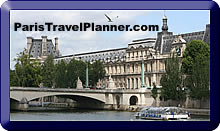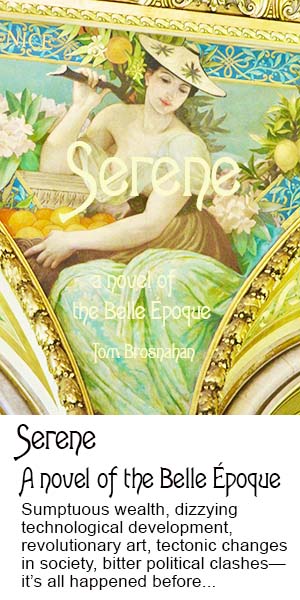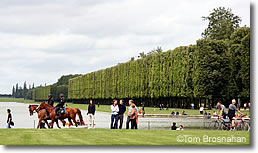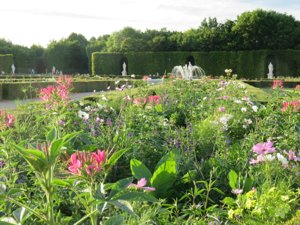 |
Château de Versailles Gardens | |
|
Like everything else at Versailles,
the gardens are vast—and
beautiful. Even when the Palace is
packed with people, the gardens offer the
opportunity to get away from the crowds...if
you walk far enough.
|
||
|
|
||
|
|
|
The palace gardens are worth special consideration. All good 17th-century gardens had to have fountains, and the system of waterworks at Versailles is without equal. The gardens include formal plantings, rows of espaliered trees, small bosquets or groves of trees, often with statues or other forms of decoration at their center. There is also an Orangerie, where Louis XIV's 2000 orange trees could grow and thrive. Throughout the gardens are ornate bassins, decorative pools that may also be fountains, again often with ornate sculptures as a central feature. Although all the fountains are magnificent, I find the Apollo Fountain, with its large gilded horses pulling the chariot of the sun god, very dramatic. You can visit the gardens free of charge on most weekdays. If you just want to wander, there are several entrances away from the Palace itself. Of course, if you want to visit the Palace and other parts of the complex you will need to buy a ticket. Fountain shows (Grandes Eaux Musicales) are played on Sunday afternoons from April through September; there are also occasional weekend vening shows, with the fountains marvellously illuminated. Check out the Night Fountains Shows. The gardens were established by Louis XIV, who in 1661 commissioned the famous French landscape architect André Le Nôtre to design them. The work took forty years and engaged a number of other well-known people, including the architect Jules Hardouin-Mansart and painter Charles Le Brun, who were also responsible for the Hall of Mirrors in the Grand Château and other aspects of Versailles. Creating the gardens was a huge undertaking. Marshy grasslands and woods were converted to formal gardens. Trees were brought from across France to be planted at Versailles. There is a marvellous view of the central gardens from the steps of the Château. But be aware that you are only seeing a small portion of the grounds. The Grand Canal, a central waterway 1,670 meters long, divides the formal gardens and reflects light. Also a creation of Le Nôtre, the Grand Canal has always been used for boating, ranging from gondolas sent by the Republic of Venice in the 17th century to rowboats for hire today. Beyond the palace area are acres more gardens, some wild and untamed, others cultivated. The Grand Trianon and the Petit Trianon are surrounded by their own plantings, and of course Marie-Antoinette's Hameau, or man-made Hamlet, includes gardens and farms.
|
|
Above, the spectacular Grandes
Eaux.
 |



